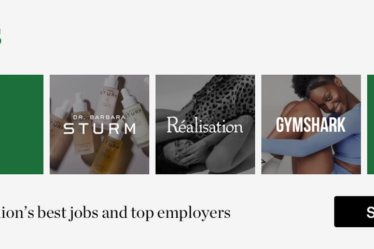
Brands used to be able to turn first-time customers into repeat purchasers with discount codes or an invitation to an exclusive event. Now, to get shoppers to stick around, companies are often expected to bring consumers deeper into the brand’s ecosystem.
Faced with a saturated market and increased advertising costs, emerging digitally native beauty brands are hoping to drive sales — and profitability — from a robust roster of hyper-dedicated fans rather than constantly chasing new customers. Early-stage start-ups like cosmetics brand Saie and hair-care company Crown Affair are getting input from loyal customers before developing new goods, giving those shoppers perks like early access to products and affiliate commission, and creating community hubs for consumers to gather and connect with one another — even if it doesn’t directly lead to purchases.
The rise of fashion brands like streetwear giant Supreme and intimates label Parade have demonstrated that fostering a strong community of consumers who buy into a company’s image and identity as much as they do the physical product can be an effective growth tactic. But beauty brands, which sell goods that feel more personal to shoppers, are particularly adept at converting everyday consumers into ambassadors. DTC players like Glossier that are already well-positioned to aggregate direct feedback from customers have supercharged growth by creating a dialogue with their fan base, using their commentary to shape the products they make.
The companies that are able to effectively do so increase their chances of financial success and longevity, experts say. The direct feedback that communities provide saves them time and money developing products that won’t sell. They can also lower their advertising costs as fans organically spread the word about their products to their own micro-communities.
“The future very simply is where brands are built by communities, for communities and owned by communities,” said Breana Teubner, chief operating officer at Try Your Best, which provides software that helps brands manage and reward their online communities. “Brands that can start enabling that will be the ones that win over 10 years.”
Forging Community From the Start
Today’s crop of start-ups are creating a two-way conversation with their consumers from the get go.
When Laney Crowell, a former Estée Lauder executive, launched her beauty brand Saie in November 2019, she concurrently started a private Facebook group called “the clean beauty crew” to more closely communicate with customers after witnessing the dissonance between how brands made their goods and what the consumers actually wanted.
“I wanted to be in the kitchen with our community to make sure we were servicing them,” said Crowell, who is Saie’s chief executive. “Having worked in really big beauty, it just never made sense to me the distance that was between the brand and the consumer.”
Members of the group get access to products before they go on the market, and even get to voice their opinion on other endeavors, like casting models for campaigns. When Saie was preparing to introduce its tinted moisturiser in 2020, it asked group members to volunteer to help create the item’s shade range. A group of around 28 people representing a range of skin tones and ages, which it calls “the complexion crew,” tried samples and provided notes on the brand’s formula.
Today, the Facebook group has grown to nearly 6,000 members. “That community is our brand,” Crowell said. “It’s completely entrenched in our DNA.”
By bringing consumers into the process early on, brands can reap the benefits for years to come. When Tula Skincare launched in 2013, the brand mailed samples of its cleansers and serums to influencers it thought would enjoy its products, such as creators in the parenting space. It elicited feedback by inviting some of those early enthusiasts to the brand’s office to chat with the company’s executives, said Dan Reich, the brand’s co-founder.
“We always felt like the more we can get the community ingrained and part of the building of the brand, the more engagement and loyalty we would engender with them,” Reich said.
Incentivising Loyalty
Companies that want their communities to be a central part of their growth strategy should consider introducing rewards that allow fans to directly benefit from the brand’s success.
For example, from the start, Tula offered its brand ambassadors — made up of fans who pledged to promote the products they used and loved on social media without any upfront payment — a commission of up to 20 percent for the sales they drove, a higher affiliate rate than many retailers and brands offer. The brand’s ambassador cohort grew from a few dozen people, which even included fitness-centric content creators and consumers without a large following, to thousands over the years.
“We wanted these people to be part of our growth and share in the upside,” Reich said.
From 2013 until its eventual exit, the company saw more than 50 percent of its annual e-commerce sales come from transactions driven by its brand ambassadors. When CPG giant Procter & Gamble acquired Tula in January 2022, its 2021 sales reached $150 million.
Some brands offer consumers ways to directly communicate with the brand and get expert advice on products. Customers who send Saie selfies without makeup in natural light through direct messages on Instagram, for example, receive a response from a live representative who will help them find the closest possible foundation shade that matches their skin tone before they purchase.
“Brands that seek to create a product or a story that people want to centre around will find that their community is built with much stronger roots,” said Simeon Siegel, managing director and senior analyst of retail and e-commerce at BMO Capital Markets.
More Than a Transaction
Community has become a marketing buzzword, and with that, there’s a risk in community-building efforts coming across as an inauthentic attempt to hop on the latest trend — especially if they’re too oriented around generating another sale.
Crown Affair took this into account when it created an eight-week mentorship program in April 2020, just two months after launch, to link up early professionals with executives across different industries. It started the program after receiving an influx of inquiries about interning for the brand. The company saw it as an opportunity to build deeper relationships with a group of people who felt a connection with Crown Affair, said Dianna Cohen, the company’s founder and CEO. The program now has around 400 members who have used its resources to find new jobs and develop close friendships.
The program is largely unrelated to selling Crown Affair products like shampoo and conditioner. But this non-transactional approach can still deliver solid business results: Many of the program’s members are among the brand’s highest returning customers, Cohen said, and around 60 percent of Crown Affair’s existing customer base buys new products when they launch.
“There’s so many levels to community,” Cohen said. “Somebody can understand your mission and what you’re doing before they even engage with your product.”



